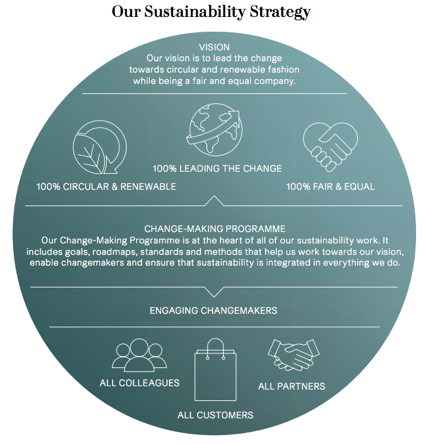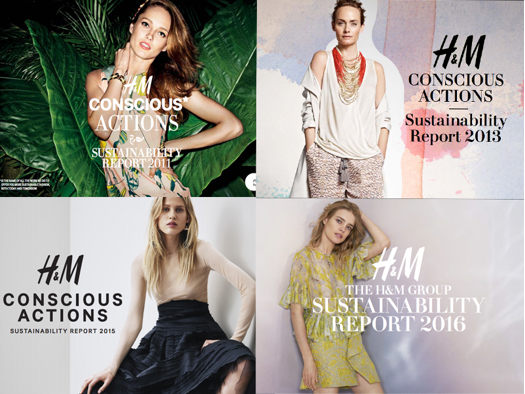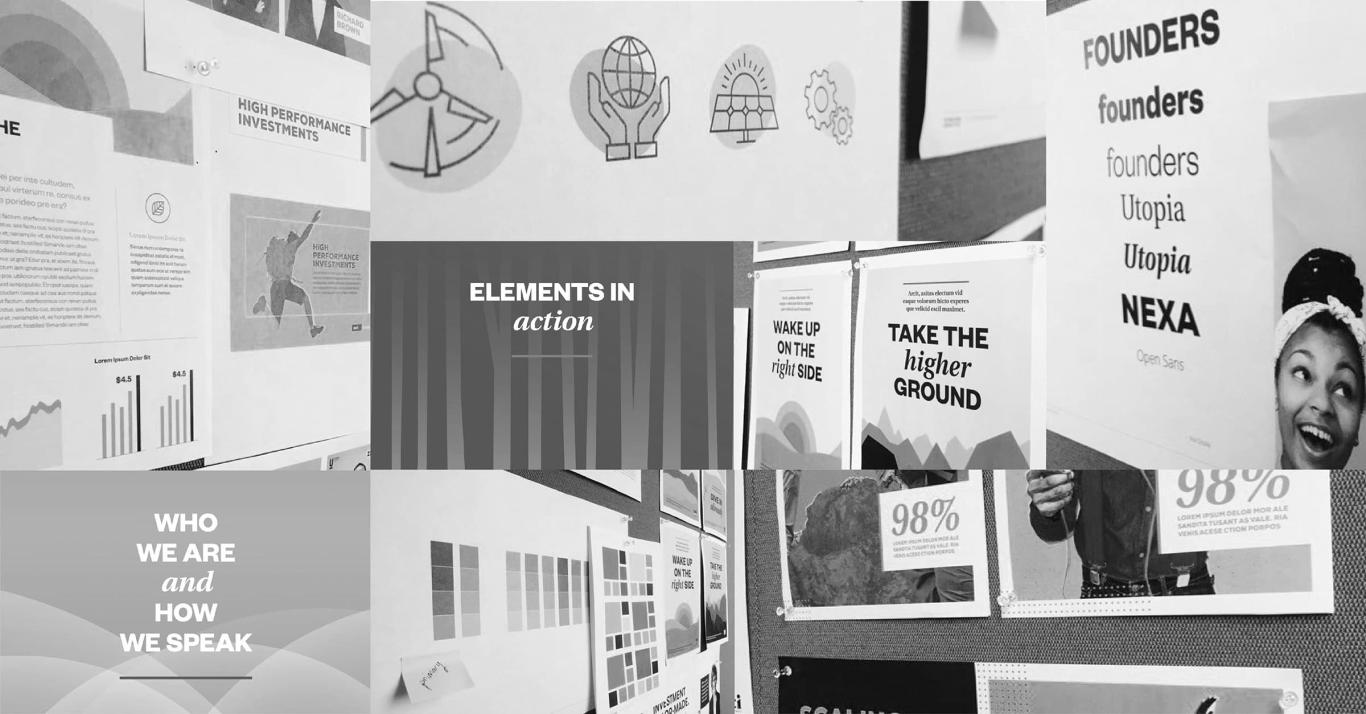Sustainability Spotlight: H&M Group
In its 15th consecutive year of sustainability reporting, the H&M Group has produced yet another comprehensive and issue-focused report. While the online PDF offers a clear description of the company’s new sustainability strategy and ambitions, old design habits die hard. At times, this is putting policy and practice in conflict with each another.
Content considerations: words of the wise
In 2010, the H&M Group identified seven strategic pillars – later referred to as the seven Conscious Commitments – as part of its sustainability program and, in 2016, the company put those to bed by reporting on a new vision and strategy orbiting around three “ambitions”:
- 100% Leading the Change
- 100% Circular & Renewable
- 100% Fair & Equal

Most notable about these ambition areas is the quantifiable marker attached to each of them. One might accurately assume that using “100%” draws a hard line to mean entirely this or completely that, but H&M is very clear from the start that this number is the company’s ultimate ambition, and – as Anna Gedda, head of sustainability for the company, puts it – “not necessarily an exact measurement […] Unless we all aim for 100% we’ll never fully get there.”
The H&M Group has obviously put careful consideration into word choice, moving away from the term “commitment” to identify the company’s sustainability strategy in terms of its ambitions. There would be little wiggle room on a commitment that starts with 100%. As it also happens, this year’s report makes no mention of responsible marketing, which was once a focus under the company’s “Be Ethical” commitment.
High fashion design flaw
The look of this year’s H&M sustainability report continues to be right on brand. Since 2010, the company has communicated its sustainability performance using a simple editorial layout that frames content with vibrant photography and clean graphic elements. It’s an approach that works, but we find it lacking in one area.

Despite a stated commitment to diversity, the H&M sustainability report tends to prioritize the prototypical white and female face of fashion.
In keeping with the identity set out in previous years, the cover of the 2016 report features a female model wearing H&M products – a photo sourced from the company’s marketing materials that year. While the company made a bold move to focus on a new sustainable business strategy, the choice to recycle the same cover approach leaves much room for improvement. Part of H&M’s 100% Fair & Equal ambition includes the values of equality, diversity and inclusiveness, as well as a policy of striving to “show a representative variety of style and individuals”. Since 2011, four of the five models featured on the cover of H&M’s sustainability report were thin, white and female. We’d love to see H&M choose a cover that connects more directly to its vision of leading change in the fashion industry and beyond.




